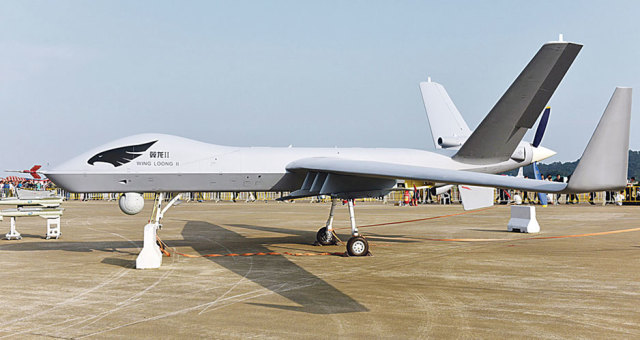Losses of Chinese-made drones in the Middle East and North Africa
The quality of Chinese-made unmanned aerial vehicles (UAVs) supplied to the Middle East region has been repeatedly discussed by experts. Some of them claim that Chinese drones have proved to be a cost-effective alternative to American drones, while others point to high accident rates and unreliability of these devices compared to Israeli, American and Turkish counterparts. Despite the problems, Chinese UAVs are still popular in the arms markets of the Middle East and North Africa.
The obvious low cost of Chinese UAVs makes them an ideal choice for countries with a limited budget. Conversely, the price of some Chinese UAVs is actually approaching, and in some cases even exceeds the cost of Western analogues. For example, the cost of purchasing one Wing Loong II UAV by Middle Eastern customers is about $ 15 million for an international client, which is three times the price of the Turkish Bayraktar TB2 drone.
Countries such as Jordan eventually had to put up for sale their entire fleet of CH-4B UAVs the hard way due to poor reliability less than two years after purchasing drones from China. The same type performed slightly better in Iraq: 8 of its 20 CH-4Bs crashed in just a few years, while the 12 remaining ones are currently idle in a hangar due to a shortage of spare parts. Algeria lost 3 CH-4B as a result of crashes within a few months, and Nigeria, Morocco and Turkmenistan generally purchased Turkish UAVs after the operation of Chinese drones.
It is difficult to give an accurate overview of the losses of Chinese UAVs, since countries such as Turkmenistan are unlikely to ever announce the losses of their (Chinese) drones. The same situation is with Saudi Arabia. Therefore, many losses go unnoticed. At the same time, there are several research and intelligence organizations that specifically track aircraft falling to the ground (shot down), including missiles and UAVs. They keep statistics on the defeat of air targets. For example, the Stockholm International Peace Research Institute (SIPRI, Sweden).
This institute regularly compiles a list of losses of Chinese-made UAVs purchased by foreign countries. It includes visually confirmed samples identified by SIPRI researchers. However, the actual number of lost UAVs significantly exceeds this list: the institute's experts, after analyzing the program for the sale of Chinese drones to the countries of the Middle East and North Africa, came to the conclusion that Saudi Arabia has already acquired 70 Chinese multipurpose UAVs, Egypt – 60, the UAE – 40, Pakistan – 25, Iraq – 12.
SIPRI employees believe that the purchase of Chinese drones by customers from the Middle East became possible due to two factors similar in time: the desire of the countries of the region to modernize their armed forces and the increased willingness of China to sell defense technologies developed by it, primarily UAVs. Analysts of the institute note that Chinese drones are usually inferior to analogues from the United States, Russia and Israel, because they are less advanced, fly at lower speeds and at lower altitudes. Their main advantages are a lower price, as well as a longer flight duration.
In conclusion, it is worth noting that the report of the Royal United Services Institute RUSI "Armed drones in the Middle East" concluded that national prestige and status are the main reason why the countries of the region acquire weapons in China. Despite the fact that US technology in this area remains the best, Washington's extremely selective policy on the supply of weapons has allowed China to fill the gap in the market. The authors of the report report that the UAE acquired Chinese drones for reasons of prestige, and then persuaded the United States to provide them with more advanced technologies. Currently, the UAE continues to use a fleet of Chinese-made Wing Loong 1 drones, which are used against targets in Yemen and Libya.
At the same time, Chinese companies continue to participate in arms exhibitions, demonstrating their new UAV developments. For example, at the Dubai Airshow 2021 and at the 5th UMEX-2022 unmanned Systems Exhibition in the UAE, among the drones developed independently by Chinese enterprises exhibited at the airshow, the CR500 unmanned helicopter attracted special attention of visitors and buyers, which is a third shorter than full-size unmanned helicopters, since it lacks a tail rotor. The special design provides greater maneuverability in flight and flexibility in control in conditions of ultra-high temperatures, as well as facilitates its storage and transportation.
Dmitry Zharov
The newspaper "Military-Industrial Courier", published in issue No. 9 (922) for March 15, 2022

